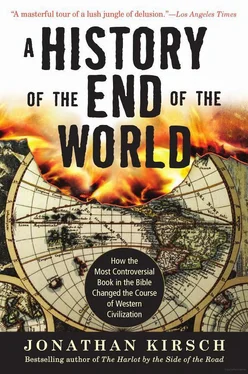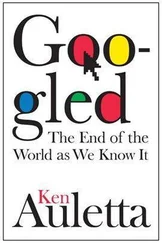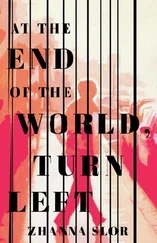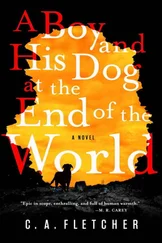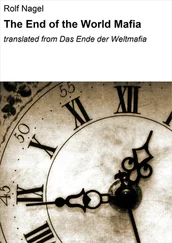Darby is yet another one of those freelance preachers and self-appointed prophets who populate the history of the apocalyptic tradition. At the age of twenty-five, Darby had been ordained as a priest in the Church of Ireland, the Irish counterpart of the Church of England, but he soon broke away and eventually founded his own tiny congregation of religious dissenters known as the Plymouth Brethren. Starting in 1840, Darby began to sermonize on the shiny new idea of the Rapture, first in Switzerland and then in the United States. His comforting promise that Christian believers would be spared the ordeal of the Tribulation—“a neat solution to a thorny problem,” as Timothy Weber points out—was received and repeated by his colleagues among the Christian fundamentalist clergy in America. 63
“The teaching,” enthused Darby after his seventh and final visit to America, “is spreading wonderfully.” 64
Among those who propagated Darby’s teachings throughout America was a preacher named Dwight L. Moody (1837–1899), who has been described as “the evangelist who did more than anyone else in America to spread premillennial views of an imminent end.” 65Like the Millerites, who made good use of the latest printing technology to produce vast quantities of tracts and broadsheets, the Moody Bible Institute preached the new strain of Christian true belief through its own publishing house and, later, a powerful radio station that prefigured the television evangelism of the late twentieth century.
“I look on this world as a wrecked vessel,” explained Moody. “God has given me a lifeboat, and said to me, ‘Moody, save all you can.’” 66
The other crucial American convert to Darby’s reading of Revelation was Cyrus R. Scofield (1843–1921), a veteran of the Confederate army who spent some time in jail on charges of forgery before experiencing a religious conversion and undertaking his life’s work of explaining the prophetic meanings that he found in the Bible. The so-called Scofield Reference Bible, an edition of the King James Version to which Scofield added his own marginal annotations, was first published in 1909 and ultimately sold more than 10 million copies before it was revised and republished later in the century. So influential was Scofield, observes Paul Boyer, that many evangelical Christians “had difficulty remembering precisely where they had acquired a particular idea: from the sacred text itself, or from Scofield’s notes.” 67
Between Moody and Scofield, in fact, the newfangled idea of the Rapture and the various other theological innovations of John Nelson Darby achieved the status of received truth in the early years of the twentieth century: “My hope is built on nothing less,” went one parody of a gospel song, “than Scofield’s notes and Moody Press.” 68And Christian fundamentalism of the kind espoused by men like Moody and Scofield defined the skirmish line in a culture war against what they regarded as the minions of Satan at work in America—“the ultimate antidote for all infidelity,” according to Reuben A. Torrey (1856–1928), superintendent of the Moody Bible Institute and a far-ranging revivalist preacher, “and the impregnable bulwark against liberalism and false cults,” by which he meant all of the unwelcome phenomena of the modern world. 69
“I don’t find any place where God says the world is to grow better and better,” insisted Moody himself. “I find that the earth is to grow worse and worse.” 70
What the rest of the world celebrated as the march of civilization, the fundamentalists condemned as the secret workings of a diabolical conspiracy. “Satan has organized the world of unbelieving mankind upon his cosmic principles of force, greed, selfishness, ambition and pleasure,” ranted Scofield in his annotations to the book of Revelation in The Scofield Reference Bible. “[T]he present world-system…is imposing and powerful with armies and fleets; is often outwardly religious, scientific, cultured, and elegant; but, seething with national and commercial rivalries and ambitions, is upheld in any real crisis only by armed force, and is dominated by Satanic principles.” 71
Just as the author of Revelation detested the buying and selling of goods in the Roman marketplace and distrusted the pagan guilds that a Christian craftsman might be tempted to join, for example, some Christian fundamentalists in America decried the “congested wealth” of big business—“a whirlpool of mad and maddening excess,” according to one evangelical preacher 72—and saw union labels on factory goods as “the mark of the beast.” And, just as John was deeply offended by the pleasures of Roman civilization, the fundamentalists denounced the entertainments and diversions of popular culture in modern America. The Reverend Torrey, for example, was willing to concede that “dancing was not a sin—as long as men and women did not do it together,” but certain fashionable dances, including the fox-trot, the shimmy, and the Charleston, were regarded as “nothing less than obscene.” 73
“Many of the couples performing these dances should have a marriage license before stepping out on the ballroom floor,” complained one outraged Christian observer, “and if they had a marriage license, there would be no excuse for committing such acts in public.” 74
Still, the Protestant fundamentalists in America always looked on the sunny side of doomsday. Back in the Old World, an ardent Catholic reader of Revelation like the French nun Thérèse of Lisieux thrilled at the prospect of the Tribulation: “When thinking of the torments which will be the lot of Christians at the time of Anti-Christ, I feel my heart leap with joy and I would that these torments be reserved for me.” 75But here in America, some Christians preferred to believe that they would be spared all such torments when they were first “raptured” to heaven and then restored to earth to reign over the millennial kingdom alongside the King of Kings.
“Let us remember one thing,” John Darby had announced back in the mid–nineteenth century, “we Christians are sheltered from the approaching storm.” 76And Reuben Torrey affirmed the same reassuring message in the opening years of the twentieth century: “The storm will be brief,” he declared, “and beyond the storm there is a golden day, such as philosophers and poets never dreamed of.” 77
Curiously, and even rather touchingly, some of the apocalyptic enthusiasts who were delighted at the prospect of watching the Tribulation from on high were also troubled by the fate that would surely befall those benighted souls who still clung to what John calls “the synagogue of Satan.” Attentive readers of Revelation were reassured that 144,000 male virgins from the tribes of Israel would be “sealed” in the end-times, but what about the rest of the Jewish people? Here, too, John Darby offered a startling new way to understand the story of Revelation and, especially, the special fate that was reserved for the Jewish people in the end-times.
Of all the ironies that have come to be attached to the book of Revelation, none is quite so strange as the love-hate relationship between its fundamentalist readers in America and the Jewish people. The author of Revelation, as we have seen, condemns his Jewish contemporaries for rejecting the messiahship of Jesus of Nazareth and suggests that Jews will spend eternity in the company of pagans and lukewarm Christians in a lake of fire. And yet some of the most ardent readers of Revelation in America proudly call themselves Zionists—and they are inspired to do so by their most cherished apocalyptic beliefs.
“Christian Zionism” sometimes seems like an oxymoron precisely because the Christian apocalyptic tradition has always carried an ugly stain of anti-Semitism. Starting in late antiquity, as we have seen, the folklore of the Apocalypse came to include the scandalous notion that the Antichrist will be a Jewish man sired by the Devil and a Jewish harlot in a Babylonian brothel. At best, some otherwise anti-Semitic readers of Revelation held out the faint hope that at least some Jews would spare themselves the fires of hell by belatedly embracing Jesus Christ as the Messiah.
Читать дальше
